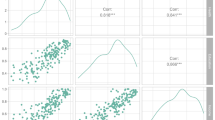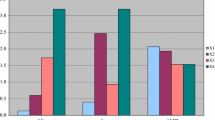Abstract
The construction of composite indicators is one of the methodological standard solutions in order to reduce the complexity of systems of multiple indicators of social development. The method requires non-trivial operations of standardization and weighting of the original indicators and tends to give oversimplified descriptions of the analysed social development. Consequently this article proposes an alternative approach, which translates the original observational data into temporal leads and lags in comparison with a developmental reference trajectory. The result is a system of multiple social times, which are simultaneously present in a national society. Instead of averaging these different social times into a composite index, the article proposes to analyse their minimum- and maximum-values such that the complexity of national development is reduced by the related time-intervals. As a demonstration of the practical usability of the proposed method, the author investigates the socio-economic development of three European countries between 1900 and 2000: Germany, Spain, and the United Kingdom. It turns out to be possible to transform the original data into temporal leads and lags with regard to the average European development or alternatively its best performance and to compress the resulting data into time-intervals, which have meaningful interpretations on the basis of the respective national histories.









Similar content being viewed by others
References
Adam, B. (1995). Timewatch: The social analysis of time. Cambridge: Polity Press.
Bandura, R. (2008). A survey of composite indices measuring country performance: 2008 update. New York: United Nations Development Programme.
Clio Infra (2016). www.clio-infra.eu. Accessed 31 Aug 2016.
Cramer, D., & Howitt, D. (2004). The sage dictionary of statistics. London: Sage.
Etzioni, A. (1968). The active society. New York: Free Press.
Freudenberg, M. (2003). Composite indicators of country performance: A critical assessment. Paris: OECD.
Fukuda-Parr, S., & Kumar, S. (Eds.). (2005). Readings in human development (2nd ed.). Oxford: Oxford University Press.
Habich, R., Noll, H. H., & Zapf, W. (1994). Soziale Indikatoren und Sozialberichterstattung (Social Indicators and Social Reporting). Bern: Schweizerisches Bundesamt für Statistik.
Kim, J.-O., & Mueller, Ch. (1998). Factor analysis: Statistical methods and practical issues. Newbury Park: Sage.
Mueller, G. P. (2005). Divergence and synchronization of the institutional clocks of the welfare state. International Journal of Comparative Sociology, 46, 487–506.
Mueller, G. P. (2011). On the use of social clocks for the monitoring of multidimensional social development. Social Indicators Research, 102, 23–37.
Munck, G. L., & Verkuilen, J. (2002). Conceptualizing and measuring democracy. Comparative Political Studies, 35, 5–34.
OECD. (2008). Handbook on constructing composite indicators: Methodology and user guide. Paris: OECD.
Raworth, K., & Stewart, D. (2005). Critique of the human development index. In S. Fukuda-Parr & S. Kumar (Eds.), Readings in human development (chap. 2.4). Oxford: Oxford University Press.
Runciman, W. G. (1966). Relative deprivation and social justice. London: Routledge.
Sablier, A. (1997). Une nouvelle approche des phénomènes sociaux: Les horloges sociales (Social clocks: A new approach to social phenomena). Paris: L’Harmattan.
Sicherl, P. (1973). Time–distance as a dynamic measure of disparities in social and economic development. Kyklos, 26, 559–575.
Sicherl, P. (1992). Integrating comparisons across time and space: Methodology and applications to disparities within Yugoslavia. Journal of Public Policy, 12, 377–403.
Sicherl, P. (2011). Time distance in economics and statistics: New insights from existing data. Wien: Edition Echoraum.
Van Zanden, J. L., et al. (Eds.). (2014). How was life? Global well-being since 1820. Paris: OECD.
Vanthanen, T. (2003). Democratization. A comparative analysis of 170 countries. London: Routledge.
Wikipedia (2015a). Francisco Franco. https://en.wikipedia.org/wiki/Francisco_Franco. Accessed 20 Dec 2015.
Wikipedia (2015b). Miguel Primo de Rivera. https://en.wikipedia.org/wiki/Miguel_Primo_de_Rivera. Accessed 20 Dec 2015.
Zerubavel, E. (2003). Time maps: Collective memory and the social shape of the past. Chicago: University of Chicago Press.
Author information
Authors and Affiliations
Corresponding author
Rights and permissions
About this article
Cite this article
Mueller, G.P. Time Intervals Versus Composite Index Scores: An Alternative Approach for the Measurement of the Socio-Economic Development of Countries. Soc Indic Res 136, 1251–1268 (2018). https://doi.org/10.1007/s11205-016-1530-z
Accepted:
Published:
Issue Date:
DOI: https://doi.org/10.1007/s11205-016-1530-z




